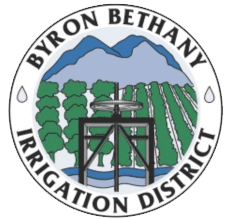Sacramento, CA (February 6, 2017) – New legislation introduced Monday by Assemblyman Adam C. Gray (D-Merced) would make sweeping, necessary changes to California’s water management. Assembly Bill 313 seeks to fix the state’s broken water rights system, removing critical conflicts of interest that improperly allow state agencies to act as prosecution, judge and jury.
“BBID is proud to stand with Assemblyman Gray in support of AB 313,” said BBID GM Rick Gilmore. “The solutions outlined in the bill address some of the most pressing issues in California water, which the District faced first-hand.”
For the better part of a year, BBID fought to protect its pre-1914 water rights, on behalf of the district’s farmers and senior water rights holders across the state. A $5-million complaint brought by the State Water Resources Control Board (SWRCB) alleged BBID diverted water when none was available. The case was dismissed by the SWRCB last June, citing lack of evidence. Following the case dismissal, BBID pledged to take an active leadership role in a collaborative effort to help solve the state’s water issues and bring clarity to California’s water rights.
AB 313 would revamp the state’s water rights administration and enforcement, as well as the State Water Project. It would transfer the existing authority of the SWRCB over water rights to the Department of Water Resources (DWR), which has expertise and is better structured to handle water rights matters.
“The current system allows the State Water Board to conduct water rights hearings in which Board staff act as prosecutors, presenting a case to Board members who act as the judge, in a court the Board runs themselves,” Gilmore said. “This unchecked power prevents water right holders across the state from being fairly treated.”
Under AB 313, enforcement proceedings would be conducted by a neutral third party, in the form of a newly-created Water Rights Division under the Office of Administrative Hearings (OAH). A new State Water Project Authority would assume DWR’s current authority and water rights for the State Water project, eliminating the potential conflict of DWR administering and enforcing water rights, while possessing water rights of its own.
Though the current model of California water governance has gone largely unchanged since 1969, experts warn improvements are necessary to meet the needs of the future. A 2010 report from the Little Hoover Commission, Managing for Change: Modernizing California’s Water Governance, urged legislators in no uncertain terms to restructure the system that “…leaves the state ill-positioned for the challenge of managing its water resources.”

